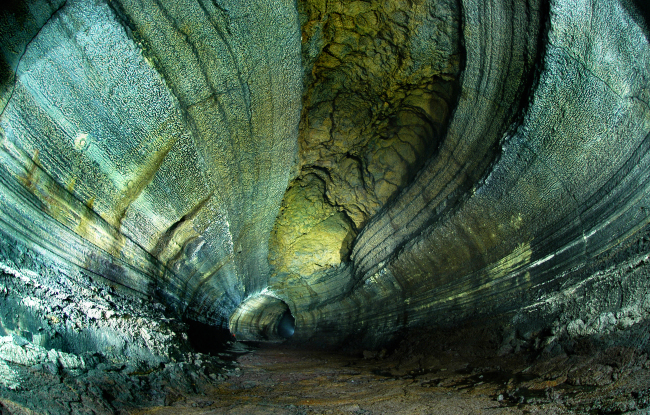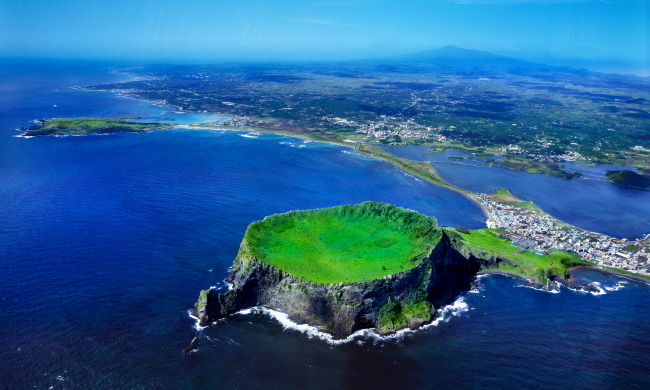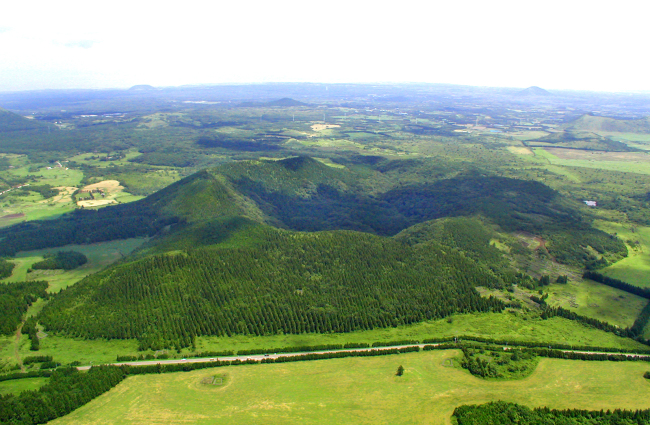[Weekender] Natural wonders of Jeju
UNESCO-designated sites make popular resort island open-air geology museum
By Lee Woo-youngPublished : Sept. 26, 2014 - 23:02
Every fall, Jejudo invites visitors to take part in a walking festival to explore the island’s fascinating landscape through the popular Olle walking trails.
This year’s Jeju Olle Walking Festival, scheduled for Nov. 6-8, takes visitors to oreum (volcanic cones), unique rock formations and a white sand beach dotted along three of the 21 Jeju Olle walking trails.
The trails lead to every nook and cranny of the island and reveal unspoiled natural wonders. Visitors witness stunning landscapes formed through volcanic activity million of years ago such as lake-filled craters, volcanic hills and lava tube caves, each with its own geological attributes and aesthetic importance.
Natural heritage sites officially designated by UNESCO cover 10 percent of the island. According to the Jeju World Natural Heritage Center, the island is the only place in the world that has won three UNESCO certificates ― for a Biosphere Reserve in 2002, UNESCO World Heritage Site in 2007 and Global Geopark in 2010.
This year’s Jeju Olle Walking Festival, scheduled for Nov. 6-8, takes visitors to oreum (volcanic cones), unique rock formations and a white sand beach dotted along three of the 21 Jeju Olle walking trails.
The trails lead to every nook and cranny of the island and reveal unspoiled natural wonders. Visitors witness stunning landscapes formed through volcanic activity million of years ago such as lake-filled craters, volcanic hills and lava tube caves, each with its own geological attributes and aesthetic importance.
Natural heritage sites officially designated by UNESCO cover 10 percent of the island. According to the Jeju World Natural Heritage Center, the island is the only place in the world that has won three UNESCO certificates ― for a Biosphere Reserve in 2002, UNESCO World Heritage Site in 2007 and Global Geopark in 2010.

Highlights among the UNESCO-designated natural wonders are three sites listed as World Natural Heritage sites under the title “Jeju Volcanic Island and Lava Tubes.” Mount Hallasan Natural Reserve, Geomunoreum and five lava caves were recognized for their unique geological and aesthetic value in 2007.
Mount Hallasan, situated in the center of the island, is noted for its diverse ecosystem, a result of the varying temperatures along its gentle slopes. The 1,950-meter mountain is a sanctuary for some 4,000 species of indigenous animals and about 1,800 kinds of plants. The hiking trails pass through some of the natural habitats and attract visitors year-round. Surrounding the mountain are more than 300 volcanic cones.
Seongsan Ilchulbong Peak, a fortress-like tuff cone, is another treasured landmark of the island, attracting visitors especially for the dramatic view of the sunrise and the sunset. Rising 182 meters above sea level, the peak, which was originally an island, became connected to Jejudo by an accumulation of sand and gravel.


Geomunoreum, a 456-meter volcanic peak covered with a lush forest, contains the world’s longest lava tube system. Lava tube caves around the peak are noted for their unique formation, length and scale. Created by huge amounts of basalt lava from the Geomunoreum Volcano, Manjanggul is an especially large cave. Meanwhile, Yongcheon Cave has dramatic limestone structures and unique geological features.
Other volcanic sites on Jeju that hold geological significance were named UNESCO Global Geoparks in 2010. Such sites include Cheonjiyeon Falls, Jusangjeolli Cliffs, Mount Sanbangsan and Yongmeori Beach.
On the southern coast near Seogwipo there stretches a dramatic view of Cheonjiyeon Falls and Jusangjeolli Cliffs. The waterfall, which means “pond where sky meets land,” is known for the splendid view of water falling from a steep cliff with a roaring sound.
Jusangjeolli Cliffs presents some of the most unusual volcanic rock pillars and a stunning view of the southern coast of the island. As if delicately carved by a sculptor, the rectangular and hexagonal rock pillars boast artistic, aesthetic feature.
The 395-meter Mount Sanbangsan, another volcanic formation in southern Jeju, offers a panoramic view of the southwest coast of the island. The mountain overlooks Yongmeori Coast, which is famous for resembling a dragon’s head. Ten minutes from the mountain, Yongmeori offers visitors the sight of a rock wall of sandstone layers formed 1 million years ago.
By Lee Woo-young (wylee@heraldcorp.com)








![[From the Scene] Monks, Buddhists hail return of remains of Buddhas](http://res.heraldm.com/phpwas/restmb_idxmake.php?idx=644&simg=/content/image/2024/04/19/20240419050617_0.jpg&u=20240419175937)






![[From the Scene] Monks, Buddhists hail return of remains of Buddhas](http://res.heraldm.com/phpwas/restmb_idxmake.php?idx=652&simg=/content/image/2024/04/19/20240419050617_0.jpg&u=20240419175937)

![[KH Explains] Hyundai's full hybrid edge to pay off amid slow transition to pure EVs](http://res.heraldm.com/phpwas/restmb_idxmake.php?idx=652&simg=/content/image/2024/04/18/20240418050645_0.jpg&u=20240419100350)

![[Today’s K-pop] Illit drops debut single remix](http://res.heraldm.com/phpwas/restmb_idxmake.php?idx=642&simg=/content/image/2024/04/19/20240419050612_0.jpg&u=)